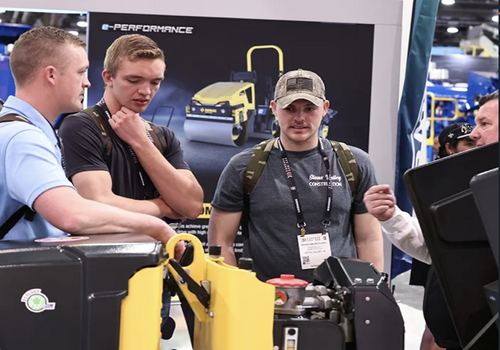Refueling construction equipment is a routine task that requires careful attention to safety and efficiency. For construction workers and contractors, understanding the best practices for refueling can prevent accidents, reduce downtime and ensure smooth operations. This field guide will provide you with practical tips and insights to make your refueling process safer and more efficient.
Importance of Proper Refueling
Refueling might seem straightforward, but it involves several risks, including fire hazards, environmental contamination and equipment damage. By following best practices, you can mitigate these risks and keep your job site running smoothly.
Safety First: Essential Precautions
- Personal Protective Equipment (PPE): Flame-resistant clothing, glasses and gloves are all crucial components of proper PPE and should be worn at all times. This protects you from fuel spills and potential fires.
- No Smoking: Ensure that there are no smoking or open flames near the refueling area. Fuel vapors are highly flammable and can ignite easily.
- Fire Extinguishers: Keep fire extinguishers readily accessible near the refueling station. Ensure that workers know how to use them in case of an emergency.
- Grounding and Bonding: Ground and bond the fuel tank and equipment to prevent static electricity buildup, which can cause sparks and ignite fuel vapors.
Efficient Refueling Practices
- Scheduled Refueling: Plan refueling during scheduled breaks or downtime to avoid interrupting operations. This helps maintain productivity and reduces the risk of rushed refueling, which can lead to accidents.
- Fuel Quality: Manufacturers will specify the best kind of fuel to use, so make sure you invest in high-quality fuel. Poor-quality fuel can damage the engine and reduce efficiency.
- Proper Storage: Store fuel in approved containers and keep them in a cool, dry place away from direct sunlight. Proper storage prevents fuel degradation and contamination.
- Fuel Management Systems: Implement fuel management systems to track fuel usage and monitor inventory. This helps in optimizing fuel consumption and reducing waste.
Refueling Procedure
- Inspection: Make refueling part of your preventative maintenance routing. Before refueling, inspect the equipment for any signs of leaks or damage. Address any issues before proceeding to ensure safe refueling.
- Shut Down Equipment: Always turn off the equipment before refueling. This prevents accidental ignition and ensures the safety of the operator.
- Clean the Area: Clean the refueling area to remove any debris or contaminants that could mix with the fuel. A clean environment reduces the risk of contamination.
- Use Funnels and Nozzles: Use funnels and nozzles to control the flow of fuel and prevent spills. This ensures that fuel is delivered directly into the tank without wastage.
- Monitor Fuel Levels: Don’t over fill; check the fuel gauge to avoid overfilling the tank. Overfilling can cause spills and create fire hazards.
Environmental Considerations
- Spill Prevention: Use spill containment measures such as drip pans and absorbent pads to catch any accidental spills. This prevents fuel from contaminating the soil and water sources.
- Proper Disposal: Dispose of used absorbent materials and contaminated soil according to local regulations. Proper disposal prevents environmental pollution.
- Eco-Friendly Fuel Options: Consider using eco-friendly fuel options like biodiesel or ethanol blends. These fuels reduce emissions and are better for the environment.
Training and Awareness
- Regular Training: Conduct regular training sessions on refueling safety and best practices. Ensure that all workers are aware of the risks and know how to refuel equipment safely.
- Emergency Procedures: Train workers on emergency procedures, including how to respond to fuel spills, fires and other incidents. Quick and effective response can minimize damage and injuries.
- Signage: Place clear signage around the refueling area to remind workers of safety protocols and procedures. Visual reminders reinforce safe practices.
Troubleshooting Common Issues
- Fuel Leaks: If you notice fuel leaks, stop refueling immediately and inspect the equipment. Replace any damaged parts and ensure that connections are secure.
- Contaminated Fuel: Contaminated fuel can cause engine problems and reduce efficiency. If you think fuel might be contaminated, drain the fuel tank and replace it with clean fuel.
- Slow Refueling: Slow refueling can be caused by clogged filters or nozzles. Clean or replace these components to restore normal flow.
Refueling construction equipment safely and efficiently is crucial for maintaining productivity and preventing accidents. By following these best practices, you can ensure that your refueling process is smooth, safe and environmentally friendly. Remember, safety is everyone's responsibility, and taking the time to refuel properly can make a significant difference in the overall success of your project.
Photo credit: SHUTTERSTOCK.COM/IRENE MILLER












